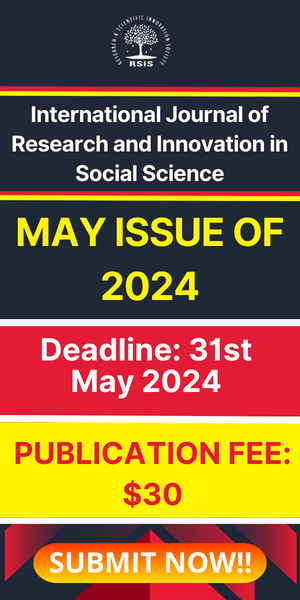Intrinsic and Extrinsic Motivation for Learning English as a Second Language (ESL) Among Pre-University Students of Pakistan
- November 26, 2019
- Posted by: RSIS
- Categories: English, IJRISS
International Journal of Research and Innovation in Social Science (IJRISS) | Volume III, Issue XI, November 2019 | ISSN 2454–6186
Tahir Niazi1, Muhammad Zahid2
1Associate Professor of English, Government College (Boys), Model Town, Lahore, Pakistan
2Assistant Professor of English, Deputy Director (Admn) Colleges, Lahore Division, Lahore
Government of the Punjab, Higher Education Department (HED), Punjab, Pakistan
Abstract: – The students are motivated to learn English in an any ESL context. This specifies that there are few reasons which are greatly affecting learning process. These reasons might be awareness about the scope and utility of English language. Some of the researchers are of opinion that the students learn English as a second language for getting jobs, employments and continuation of higher education. All these researchers seem to agree that the students are motivated to learn English. Most of the studies conducted, following Gardner and his colleagues’ Soci-educational Model, based on Motivational Theory, assume that students are instrumentally or integrative motivated to learn English. Some of the researchers, after Guthrie and his colleagues’ Reading Motivation Model, find that students are intrinsically or extrinsically motivated to read. However, the investigation in neither instrumental or integrative motivation nor in intrinsic or extrinsic motivation, has been addressed satisfactorily in learning English and reading in English. Based on these assumptions, the researchers have tried to probe into the matter of the role played by intrinsic and extrinsic motivation for learning English as a second language (ESL) among the 300 Pre-University students of Government Public Sector Colleges of Punjab, one of the major provinces of Pakistan. These are 155 Female students and 145 are Male students. This study has been conducted through the distribution of a questionnaire among the participants. This questionnaire has been adapted from Komiyama (2009)’s MREQ (Motivation for Reading in English Questionnaire) which actually has been taken from Wigfield and Guthrie (1997) and Wang and Guthrie (2004) from MRQ (Motivation for Reading Questionnaire). The questionnaire items have been modified and elicited for learning English instead of originals reading English to suit the Pakistani context. The findings of this study show that majority of these students are highly extrinsically motivated rather than intrinsically.
Key Words: Intrinsic and Extrinsic Motivation, ESL, Pre-University Students, MRQ, MREQ


